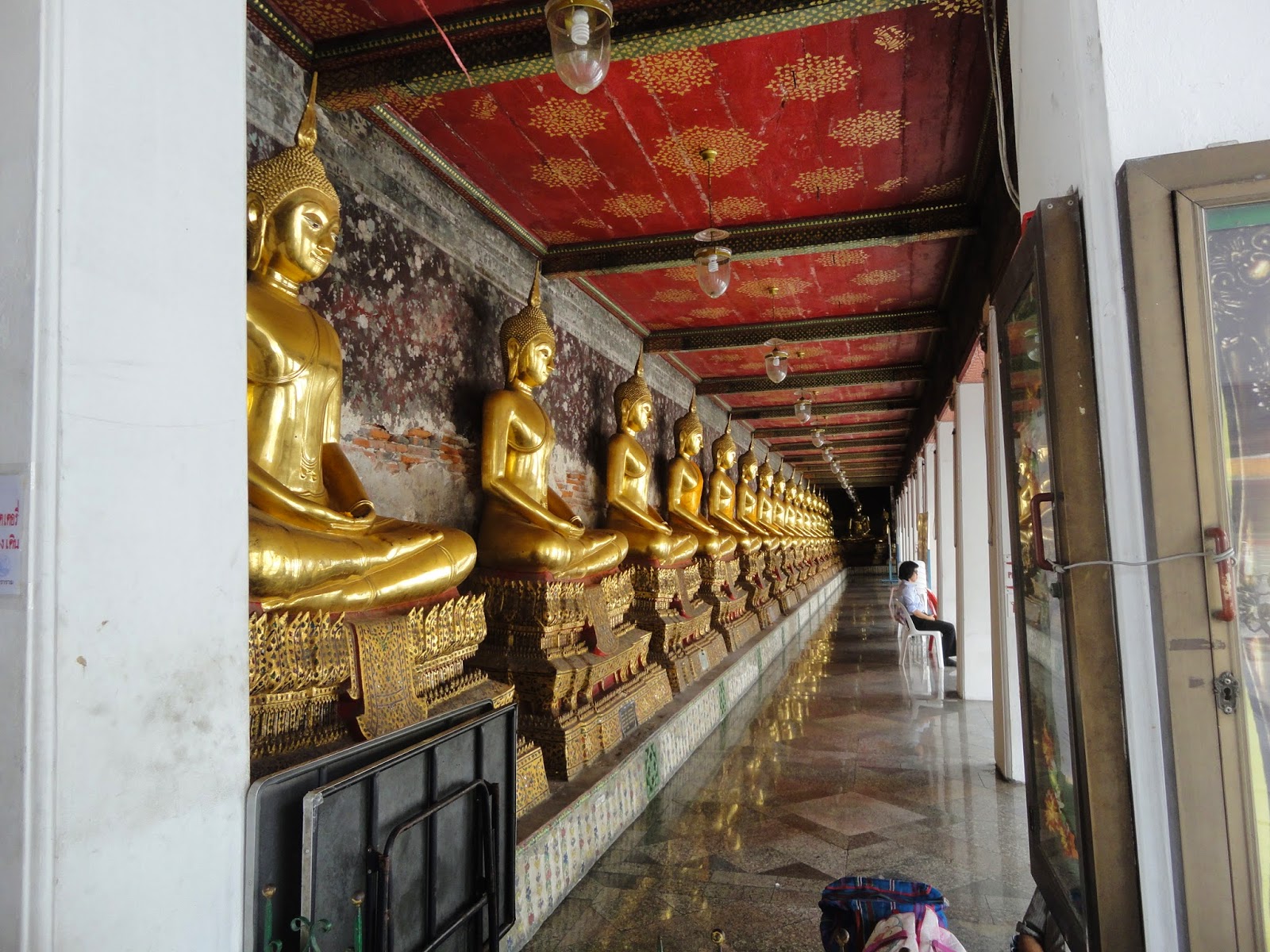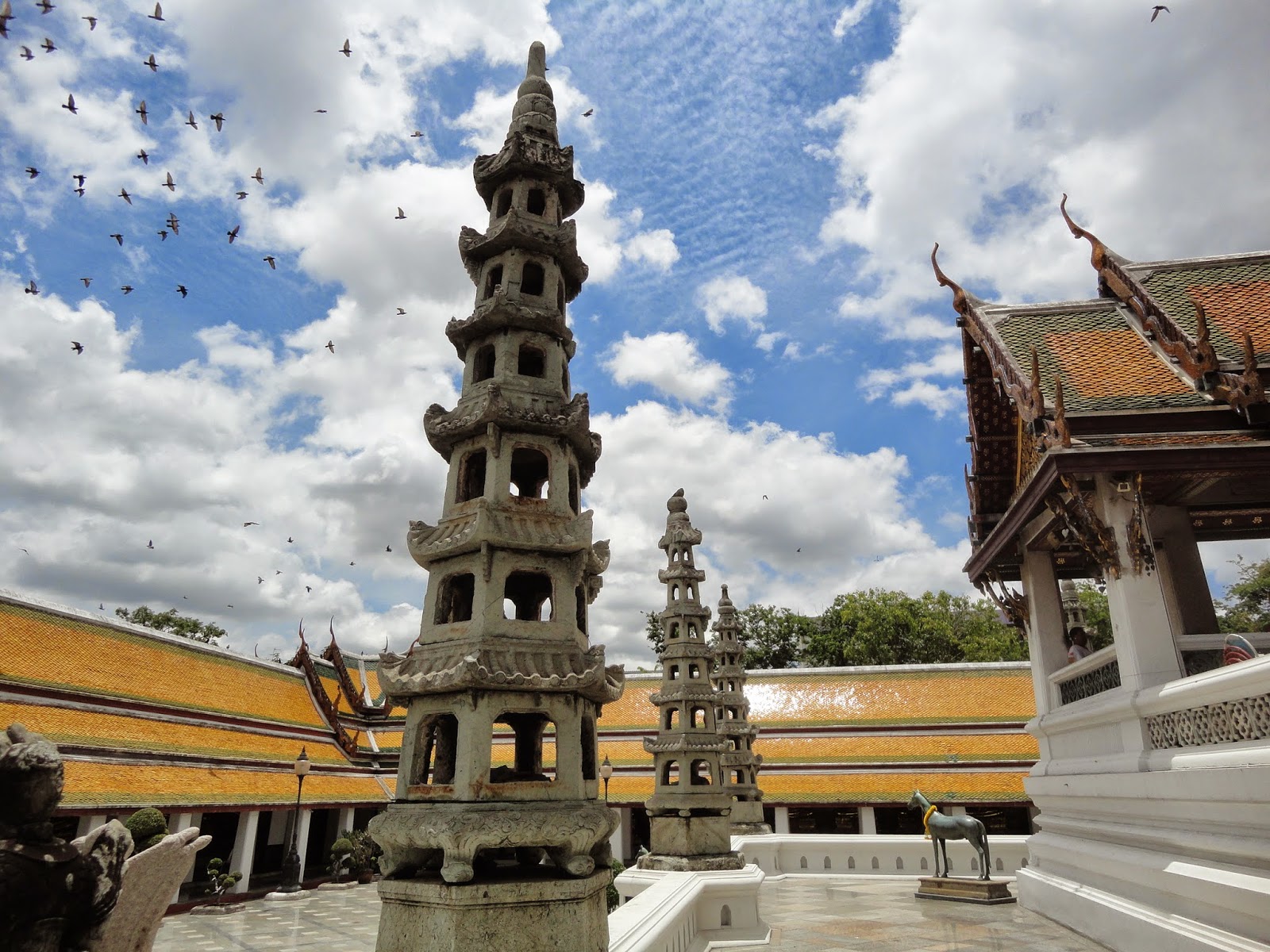On the way to Wat Suthat we passed this Hindu shrine. Read a bit about it here.
3:45 Kade prepares to enter temple
Out of the 18 temples we visited this trip to Bangkok, I would be hard pressed to find one I was more impressed with than Wat Suthat. The fact we arrived at a time of day when monks were leading a meditation, and as a result the temple was very active and there was this soothing, uninterrupted chanting that could be heard out in the courtyard the whole time we were there, perhaps pushed it to number one.
Wat Suthat Thepwararam , constructed in 1807, is one of the most important temples of Thailand and is regarded to have an excellent plan. The ordination hall is the longest in the country. The mural paintings inside were created by craftsmen in the Third Reign (1824-1851). The principal Buddha image is called "Phra Phuttha Tri Lokkachet" in the Subduing Mara position. Another building that should be mentioned is the vihara which is a replica of that of Mongkhon Bophit Temple in Ayutthaya Province. The middle door leaves at the front were engraved at the first phase by King Rama II (reigning 1809-1824). The principal image in this vihara is named Phra Si Sakkaya Muni. There are pavilions surrounding the main vihara and house 156 Buddha images.
In front of the temple is the famous Giant Swing. The Giant Swing, with a height of 21.15 metres and painted red, is a landmark of Bangkok. Some postcards of Bangkok contain photos of it. The existence of a red giant swing in front of Suthat Temple in Bangkok is an indicator of the once strong influence of Brahmanism in Thailand. The giant swing was built only two years after the establishment of Bangkok as the new capital in 1782. The story of its origin began when a Brahman named Kratai was granted an audience with King Rama I (1782-1809) and asked the King's permission to be the upholder of Brahmanism in Siam and to build a Brahmanic temple and a swing for conducting Brahmanic ceremonies. The King granted his requests and soon not one but three Brahmanic temples and a swing were built in the same area in the centre of the old city in 1784. - source









.JPG)



















No comments:
Post a Comment